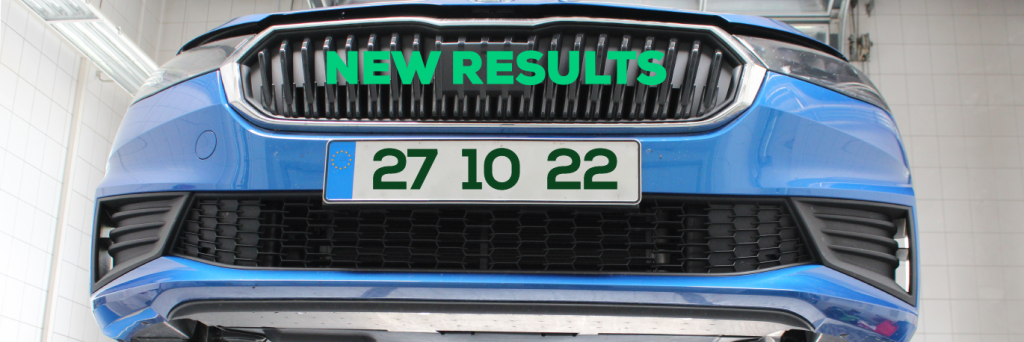
On 27 October, Green NCAP released their latest ratings for the Škoda Fabia, Nissan Qashqai and Hyundai Tucson.
The Škoda Fabia is a compact car with a small 3-cylinder petrol engine. The 1.0 MPI motor offers 48 kW of power, which is towards the lower end of most petrol vehicles. The car weighs just above one ton and is not equipped with a turbocharger or particulate filter. The combination of small engine and low weight leads to impressive efficiency with the highest measured test consumption of just above 6 liters/100 km. The lowest consumption in real-world eco driving impresses with 3.9 l/100 km. The Fabia’s weaknesses are particle control and cold weather start conditions. On the positive side, with the Fabia, Škoda demonstrates that low consumption and generally good control of pollutants are possible in the affordable segment even without electrification.
Tested here is the Nissan Qashqai, equipped with the 1.3 liter turbocharged petrol engine. The car demonstrates a well-functioning pollutant control system with potential to improve especially for the currently unregulated NH3 emissions. The good laboratory result can also be easily reproduced on the street, significantly lowering the impact of combustion engine vehicles on air quality. Like other SUVs, the Qashqai struggles with increased fuel consumption during dynamic highway driving and higher speeds. With 6.7 l/100 km in the real world On-Road test, however, the number is a relatively good value for a petrol SUV. Closely related to the fuel demand are also the greenhouse gas emissions, which don’t help the Qashqai reach more than 2½ Green stars with an Weighted Overall Index of 4.3.
The Hyundai Tucson is a relatively heavy and high-powered SUV that is equipped with a full hybrid system, a turbocharger and a GPF. It scores below average in the Clean Air Index due to poor particle control, high output of the unregulated pollutant ammonia and excessive CO emissions in high power demand highway phases. The hybrid system works effectively in situations representing “normal” real world driving and is expected to offer consumers good consumption figures in rural driving scenarios with moderate speeds. However, short urban trips and, especially, dynamic highway driving will increase the values to the measured values of 8 and 9 l/100 km, respectively. The greenhouse gas emissions are closely related to the consumption figures and the results of the Highway Test push the Greenhouse Gas Index to a mediocre 3.1 points. Lowering the particle output and a more robust pollutant control would help the Tucson easily reach higher assessment results. Higher efficiency on the highway would add to the improved score.
Read all the details in the datasheets at https://www.greenncap.com/